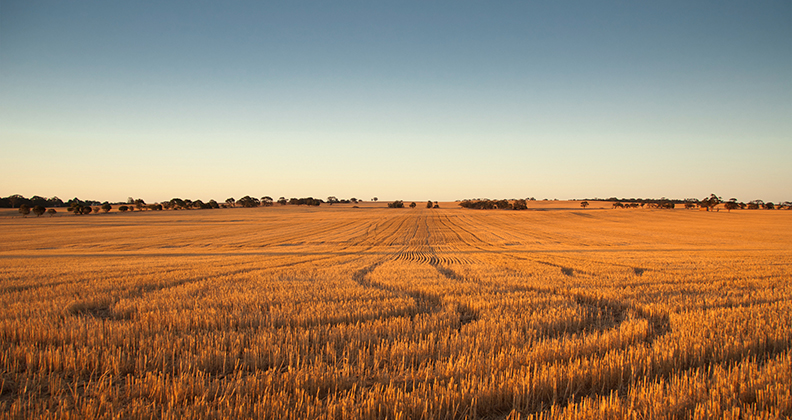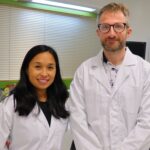The Grains Research and Development Corporation (GRDC) has announced a major new investment aimed at strengthening and enhancing national and regional grains research outcomes.
The GRDC has launched phase three of its Statistics for the Australian Grains Industry (SAGI) program which will involve the creation of four nodes across Australia to deliver an unprecedented level of high quality statistical science to underpin the scientific rigour of hundreds of research projects.
The western node will be based at Curtin University, managed by the Curtin and GRDC–supported Centre for Crop and Disease Management (CCDM) and Curtin’s Department of Mathematics and Statistics.
GRDC Managing Director Dr Steve Jefferies says the SAGI-3 investment of $18 million over the next five years will be essential in supporting rapid advances in crop varieties, agronomic knowledge and farming practices – ultimately contributing to enduring profitability for Australian grain growers.
“This significant investment will increase the national grains industry’s capacity in the area of biometrics – the application of statistics to biological data – which is incredibly important in ensuring that grains research is statistically sound and credible, as well as speeding up research outcomes for the benefit of growers,” Dr Jefferies said.
“Statistical science is an unsung hero of improvements in the grains industry. Through the GRDC’s statistics investments over the past 15 years, statistical science has played a critical role in the breeding of better grain varieties and more efficient research development and extension (RD&E) targeting grower priorities.
“Importantly, the GRDC’s long-term investment in SAGI has created enduring capacity in world-class biometricians in Australia and this generation of mid-career statisticians will continue to benefit the grains industry as they grow into our next crop of statistical leaders.
“The industry outcomes generated from the SAGI investment will be a massive step forward for the Australian grains industry as it strives to provide our growers with the tools they need to remain profitable in the face of climate, environmental and economic challenges,” Dr Jefferies said.
Each of the regional SAGI Nodes (West, North and South) will provide support for trial design and data analysis for projects relevant to their regions – these are projects developed as part of GRDC’s Grower and Applied R&D business groups.
The regional nodes will also be responsible for providing statistical training and support for regional agronomists, providing training, mentoring and statistical research collaborative support to researchers, and training a new generation of highly-skilled biometricians.
The SAGI West node at Curtin University, being led by Professor Adrian Baddeley – a renowned statistician working on spatial data analytics – and managed by CCDM, will provide support and training to more than 30 GRDC project investments in the western region.
“The SAGI West team is looking forward to working with the WA grains industry to help improve the rigour of field research and ensure all GRDC products and services are produced using statistically valid data,” CCDM Director (Agronomy and Agribusiness) Professor Mark Gibberd said.
Through education initiatives, SAGI West will play a much-needed role in improving the capability of local researchers.
“SAGI West is another example of Curtin and the GRDC co-supporting grains research to improve the profitability and sustainability of Australian farming businesses,” Professor Gibberd said.
“The project will give local researchers the confidence that their results are reliable and can be used by growers to make profitable changes on their properties.”
The SAGI West team will work closely with the GRDC’s Western Regional Cropping Solutions Network to improve statistical support of projects developed through the five port zones.
“In the western region, one of the major research priorities is frost, with growers constantly grappling with this issue in recent years. SAGI West is supporting researchers within the National Frost Initiative with more efficient experimental designs and analyses, so they can more precisely measure the impact of frost on grain crops,” Professor Gibberd said.
He said SAGI West was uniquely and advantageously placed at Curtin and in addition to its links with the CCDM, SAGI West plans to work closely with Professor Simon Cook, the Premier’s Fellow for Agriculture and Food, who was recently appointed to carry out digital agriculture research.
“Being co-located with other world class research teams and working collaboratively with them has greatly extended our ability to understand and apply statistical methodology to new issues,” Professor Gibberd said.
The SAGI western node will be closely linked to the northern and southern nodes and to the national node through training and research initiatives, as well as collaborative projects.
The national node, based at the University of Wollongong (UOW), will carry out the same support and collaborative activities as its regional counterparts but will do so for GRDC’s high-value long-term Genetic and Enabling Technologies business group projects, such as the National Variety Trials.
SAGI National project leader Dr Ky Mathews, former lead statistician at The International Wheat and Maize Improvement Centre (CIMMYT), says statistical analysis has provided plant breeders with a cost-effective way of improving the accuracy of their breeding programs.
The GRDC also has a parallel statistics investment at UOW worth $1.6 million over three years. The project will develop cutting-edge statistical software that is essential for plant breeding programs.
*** This media release was issued by GRDC ***



